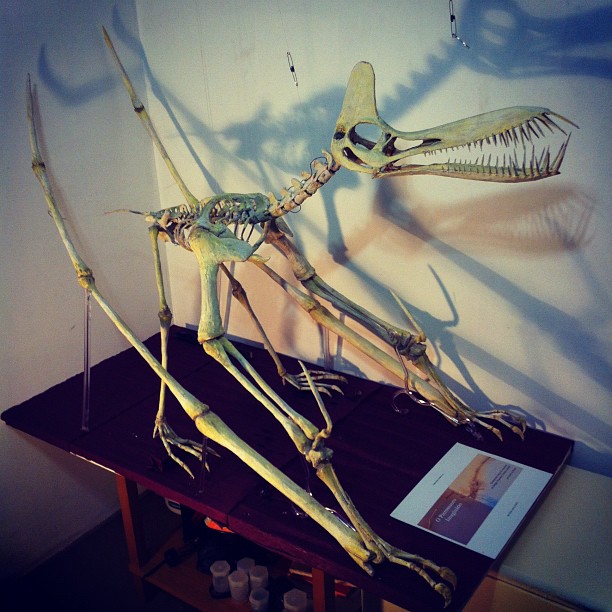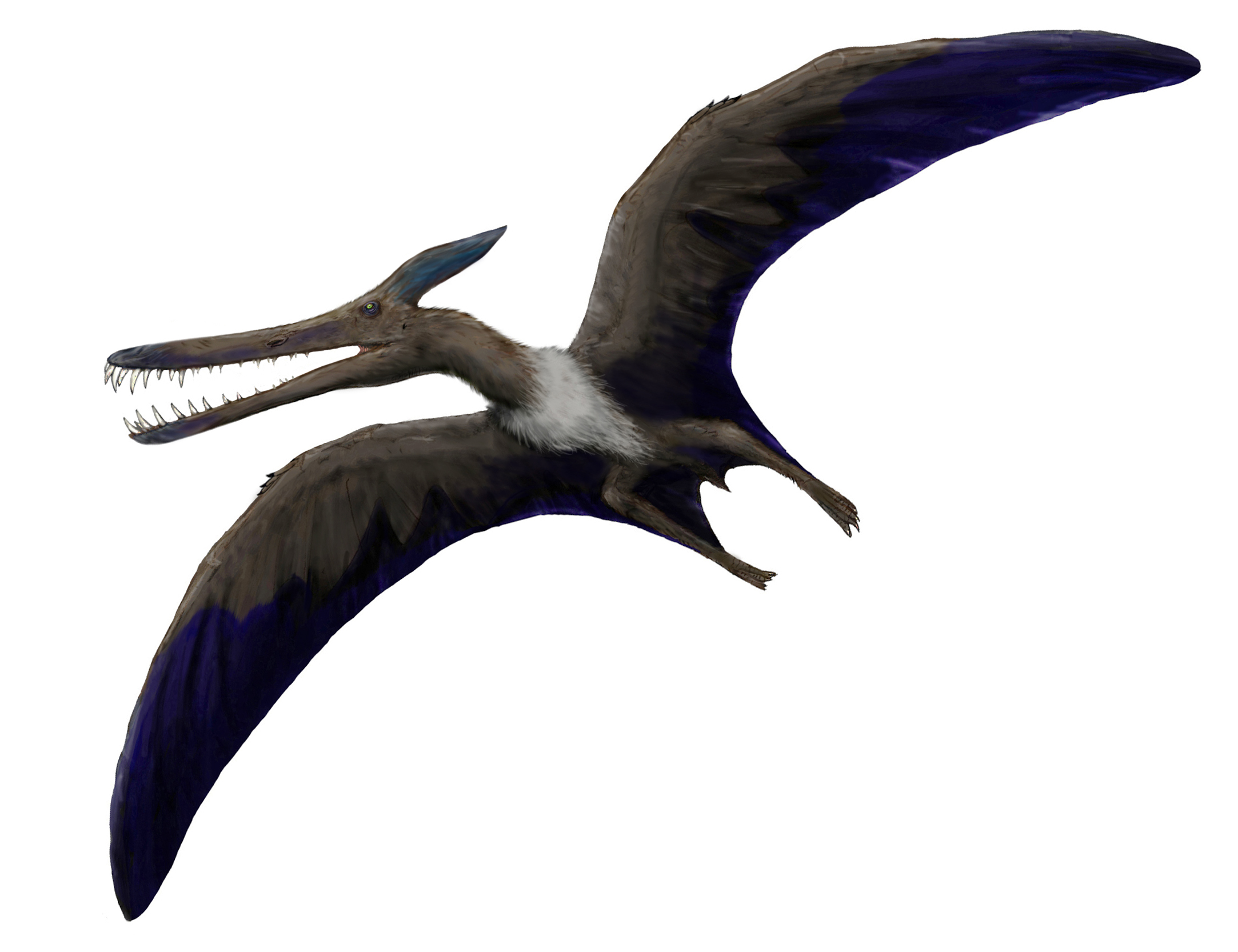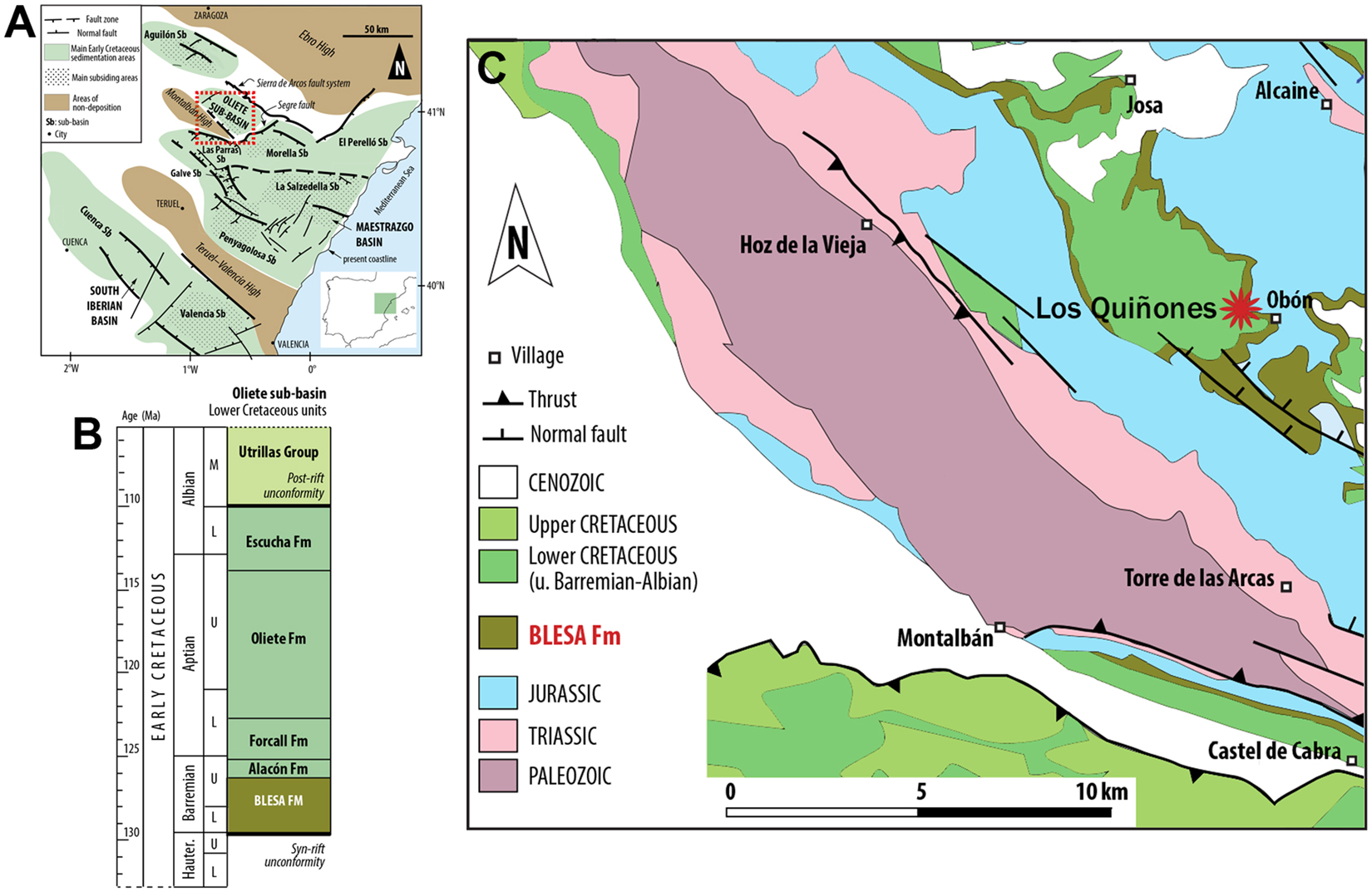|
Anhanguerinae
Anhangueridae is a group of pterosaurs within the suborder Pterodactyloidea. They were among the last pterosaurs to possess teeth. A recent study discussing the group considered the Anhangueridae to be typified by a premaxillary crest and a lateral expansion in the distal rostrum. The same study presented a cladistic analysis, for which an "agreement subtree" was calculated. The Anhangueridae was found to be sister taxon to the large crested ''Tropeognathus''. Relationships There are competing theories of ornithocheiromorph phylogeny (evolutionary relationships). Below is cladogram A cladogram (from Greek ''clados'' "branch" and ''gramma'' "character") is a diagram used in cladistics to show relations among organisms. A cladogram is not, however, an evolutionary tree because it does not show how ancestors are related to ... following a topology recovered by Brian Andres, using the most recent iteration of his data set. The cladogram below follows Pêgas ''et al.'' (201 ... [...More Info...] [...Related Items...] OR: [Wikipedia] [Google] [Baidu] |
Guidraco
''Guidraco'' (Chin. ''gui'' (鬼) "malicious ghost" + Lat. ''draco'' "dragon") is an extinct genus of toothed pterodactyloid pterosaur known from the Early Cretaceous of Liaoning Province, northeast China. According to many recent studies, ''Guidraco'' is a member of the group Anhanguerinae, a subfamily belonging to the larger group Anhangueridae. Discovery ''Guidraco'' is known only from the holotype IVPP V17083, an articulated partial skeleton consisting of a nearly complete skull, lower jaws and a series of four, second to fifth, cervical vertebrae. It was collected at Sihedang near Lingyuan City in the Liaoning Province from the Jiufotang Formation, dating to the Aptian stage of the Early Cretaceous, about 120 million years ago. Etymology ''Guidraco'' was first described and named by Wang Xiaolin, Alexander W.A. Kellner, Jiang Shunxing and Cheng Xin in 2012 and the type species is ''Guidraco venator''. The generic name is derived from Chinese ''gui'' (鬼), ... [...More Info...] [...Related Items...] OR: [Wikipedia] [Google] [Baidu] |
Maaradactylus
''Maaradactylus'' is a genus of anhanguerid pterodactyloid pterosaur known from the Lower Cretaceous period (Aptian to Albian stages) of the Romualdo Formation of northeastern Brazil. Discovery ''Maaradactylus'' is based on the Museu Paleontologico de Santana do Cariri specimen MPSC R 2357, a skull, atlas, and axis discovered in 2010 in the Aptian—Albian-age Romualdo Formation of Sítio São Gonçalo, Santana do Cariri, Ceará, in the Araripe Basin of Brazil. ''Maaradactylus'' was described by Renan Bantim and colleagues in 2014. The type species is ''Maaradactylus kellneri''. The generic name refers to Maara, in the legends of the Cariri the daughter of a chief, by sorcery changed into a river monster with long teeth, devouring fishermen. The suffix ~''dactylus'' is common in the names of pterosaurs and is derived from Greek δάκτυλος, ''daktylos'', "finger", referring to the long (fourth) wing finger. The specific name honors Alexander Kellner, Brazil's f ... [...More Info...] [...Related Items...] OR: [Wikipedia] [Google] [Baidu] |
Cearadactylus
''Cearadactylus'' is a genus of large anhanguerid pterodactyloid pterosaur from the Romualdo Formation of Brazil, South America. Fossil remains of ''Cearadactylus'' dated back to the Albian stage of the Early Cretaceous period, about 112 million years ago. The only known species is ''C. atrox'', described and named in 1985 by Giuseppe Leonardi and Guido Borgomanero. The name refers to the Brazilian state Ceará, and combines this with Greek ''daktylos'', "finger", a reference to the wing finger of pterosaurs. The Latin ''atrox'' means "frightful", a reference to the fearsome dentition of the species. Discovery The holotype of ''Cearadactylus'' is MN 7019-V (formerly CB-PV-F-O93), which was discovered in the Romualdo Formation of the Santana Group in the Araripe plateau of northeastern Brazil. It consists of a single skull with a length of .Leonardi, G. & Borgomanero, G. (1985). "''Cearadactylus atrox'' nov. gen., nov. sp.: novo Pterosauria (Pterodactyloidea) da Chapada do Arar ... [...More Info...] [...Related Items...] OR: [Wikipedia] [Google] [Baidu] |
Ludodactylus
''Ludodactylus'' (meaning "play finger") is a genus of anhanguerid pterodactyloid pterosaur from the Early Cretaceous period (Aptian stage) of what is now the Crato Formation of the Araripe Basin in Ceará, Brazil. The type and only species is ''L. sibbicki''. The generic name ''Ludodactylus'' refers to the fact that the animal had the combination of teeth and a ''Pteranodon''-like head crest, similar to many toy pterosaurs, and no such creature was known to exist until the discovery of ''Ludodactylus''. However, ''Ludodactylus'' is not the only pterosaur known to possess these features, its very close relative ''Caulkicephalus'' is another example. Etymology The genus was named by Eberhard Frey ''et al.'' in 2003 and contains one known species, ''Ludodactylus sibbicki''. The name is derived from Latin ''ludus'', "play" and Greek ''daktylos'', "finger". ''Ludus'' refers to the fact, long lamented by paleontologists, that many toy pterosaurs combined teeth with a ''Pteranodon ... [...More Info...] [...Related Items...] OR: [Wikipedia] [Google] [Baidu] |
Caulkicephalus
''Caulkicephalus'' is a genus of anhanguerid pterosaur from the Isle of Wight off the coast of England. It lived during the Early Cretaceous period, about 130 million years ago. Discovery and naming Between 1995 and 2003, bone fragments of an unknown pterosaur were found at the Yaverland locality near Sandown. The discoveries were made in or from a brown clay layer from the Wessex Formation of the Wealden Group, stemming from the Early Cretaceous (Barremian age, about 130 million years ago). In 2005 a new genus was named and described by Lorna Steel, David Martill, David Unwin and John Winch. The type species is ''Caulkicephalus trimicrodon''. The genus name is a translation of "Caulkhead", a traditional nickname for Isle of Wight residents, partially derived from Greek ''kephale'', "head". The specific name, ''trimicrodon'', means "three small teeth", in reference to the dentition. Description The holotype is IWCMS 2002.189.1, 2, 4: three pieces, more or less contiguou ... [...More Info...] [...Related Items...] OR: [Wikipedia] [Google] [Baidu] |
Anhangueria
Anhangueria (or anhanguerians) is a group of pterosaurs belonging to the clade Pteranodontoidea. Fossil remains of this group date back from the Early to Late Cretaceous periods (Valanginian to Turonian stages), around 140 to 92.5 million years ago. Anhangueria was named by paleontologists Taissa Rodrigues and Alexander Kellner in a review of '' Ornithocheirus'' species in 2013, they defined the clade as a branch-based taxon consisting of all pteranodontoids more closely related to ''Anhanguera blittersdorffi'' than to ''Istiodactylus latidens'' and '' Cimoliopterus cuvieri''. Classification Anhangueria originally only contained the genera ''Brasileodactylus'', '' Camposipterus'', '' Cearadactylus'', ''Ludodactylus'' as well as the family Anhangueridae, however, recent analyses had recovered the family Hamipteridae within this clade as well. In 2014, paleontologist Brian Andres and colleagues assigned more groups and genera within this clade, this included ''Guidraco'', the ... [...More Info...] [...Related Items...] OR: [Wikipedia] [Google] [Baidu] |
Anhanguerinae
Anhangueridae is a group of pterosaurs within the suborder Pterodactyloidea. They were among the last pterosaurs to possess teeth. A recent study discussing the group considered the Anhangueridae to be typified by a premaxillary crest and a lateral expansion in the distal rostrum. The same study presented a cladistic analysis, for which an "agreement subtree" was calculated. The Anhangueridae was found to be sister taxon to the large crested ''Tropeognathus''. Relationships There are competing theories of ornithocheiromorph phylogeny (evolutionary relationships). Below is cladogram A cladogram (from Greek ''clados'' "branch" and ''gramma'' "character") is a diagram used in cladistics to show relations among organisms. A cladogram is not, however, an evolutionary tree because it does not show how ancestors are related to ... following a topology recovered by Brian Andres, using the most recent iteration of his data set. The cladogram below follows Pêgas ''et al.'' (201 ... [...More Info...] [...Related Items...] OR: [Wikipedia] [Google] [Baidu] |
Uktenadactylus
''Uktenadactylus'' is a genus of anhanguerid pterodactyloid pterosaurs from the Lower Cretaceous Paw Paw Formation of Texas, United States and the Wessex Formation on the Isle of Wight, England. Fossil remains of ''Uktenadactylus'' dated back to the Early Cretaceous period (Barremian to Cenomanian stages), from about 125 to 100 million years ago. Discovery and naming In 1994, Yuong Nam-Lee named a new species within the genus ''Coloborhynchus'': ''Coloborhynchus wadleighi'', based on a partial snout found in 1992 in Albian layers in Tarrant County, holotype SMU 73058 ( Shuler Museum of Paleontology, Southern Methodist University at Dallas). The specific name honors the collector of the fossil, Chris Wadleigh. The reference of the species to the genus ''Coloborhynchus'' was based on the fact that both ''C. wadleighi'' and the type species of ''Coloborhynchus'', ''Coloborhynchus clavirostris'', share the trait of having three pairs of teeth laterally placed within a broad snout ti ... [...More Info...] [...Related Items...] OR: [Wikipedia] [Google] [Baidu] |
Siroccopteryx
''Siroccopteryx'' is an extinct genus of anhanguerid pterodactyloid pterosaur, known from middle Cretaceous (between the Albian and Cenomanian stages, about 105 million years ago) sediments in modern-day Morocco. Some researchers, such as David M. Unwin, consider the genus a junior synonym of ''Coloborhynchus''. Description The genus was named and described in 1999 by Bryn Mader and Alexander Kellner. The name ''Siroccopteryx'' means "wing of the Sirocco", referring to the warm wind that originates in the North Africa and then goes through the Mediterranean, and the Greek word ''pteryx'', a standard suffix for pterosaur genera that means "wing". The epithet of the type species ''S. moroccensis'' refers to its country of origin. This pterosaur is known only from the front part of the jaw with teeth. The holotype fossil, LINHM 016 (Long Island Natural History Museum), was found near Ksar es Souk, in the province of Errachidia in the region of Meknes-Tafilalet at 30.4 ° N, 4 ... [...More Info...] [...Related Items...] OR: [Wikipedia] [Google] [Baidu] |
Coloborhynchus
''Coloborhynchus'' is a genus of pterodactyloid pterosaur belonging to the family Anhangueridae, though it has also been recovered as a member of the Ornithocheiridae in some studies. ''Coloborhynchus'' is known from the Lower Cretaceous of England (Valanginian age, 140 to 136 million years ago), and depending on which species are included, possibly the Albian and Cenomanian ages (113 to 93.9 million years ago) as well. ''Coloborhynchus'' was once thought to be the largest known toothed pterosaur, however, a specimen of the closely related '' Tropeognathus'' is now thought to have had a larger wingspan. History and classification Like many ornithocheiroid pterosaurs named during the 19th century, ''Coloborhynchus'' has a highly convoluted history of classification. Over the years numerous species have been assigned to it, and often, species have been shuffled between ''Coloborhynchus'' and related genera by various researchers. In 1874 Richard Owen, rejecting the creation by ... [...More Info...] [...Related Items...] OR: [Wikipedia] [Google] [Baidu] |
Coloborhynchinae
Anhangueridae is a group of pterosaurs within the suborder Pterodactyloidea. They were among the last pterosaurs to possess teeth. A recent study discussing the group considered the Anhangueridae to be typified by a premaxillary crest and a lateral expansion in the distal rostrum. The same study presented a cladistic analysis, for which an "agreement subtree" was calculated. The Anhangueridae was found to be sister taxon to the large crested ''Tropeognathus''. Relationships There are competing theories of ornithocheiromorph phylogeny (evolutionary relationships). Below is cladogram A cladogram (from Greek ''clados'' "branch" and ''gramma'' "character") is a diagram used in cladistics to show relations among organisms. A cladogram is not, however, an evolutionary tree because it does not show how ancestors are related to ... following a topology recovered by Brian Andres, using the most recent iteration of his data set. The cladogram below follows Pêgas ''et al.'' (201 ... [...More Info...] [...Related Items...] OR: [Wikipedia] [Google] [Baidu] |
Iberodactylus
''Iberodactylus'' is a genus of pterodactyloid pterosaurs belonging to the clade Anhangueria, that during the Early Cretaceous lived in the area of present Spain. The type species is ''Iberodactylus andreui''. History of discovery and naming In the late 1980s, amateur paleontologist Javier Andreu discovered a pterosaur skull at the Los Quiñones site, west of Obón in Aragón. At the time it represented the most complete discovery of pterosaur fossil material in Spain apart from the remains of ''Prejanopterus''. In 2014, the find was reported in the scientific literature by José Antonio Ulloa-Rivas and identified as a member of the Ornithocheiroidea.Ulloa-Rivas, J.A. & Canudo, J.I. 2014. "New cranial remains of Ornithocheiroidea (Pterosauria) from the Barremian (Lower Cretaceous) of the Iberian Peninsula (Nuevos restos craneales de Ornithocheiroidea (Pterosauria) del Barremiense (Cretácico Inferior) de la Península Ibérica)". In: (Rodríguez, G.J.A. et alii, eds) ''New Insi ... [...More Info...] [...Related Items...] OR: [Wikipedia] [Google] [Baidu] |









